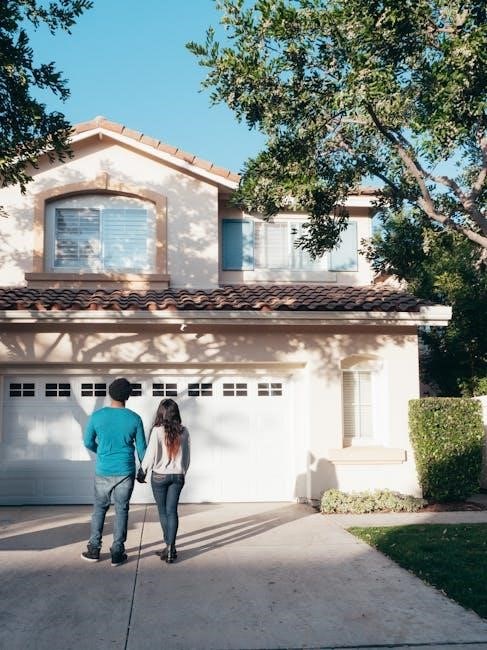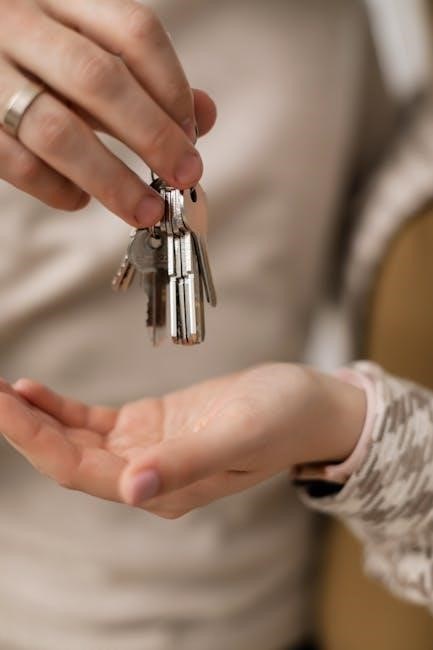Welcome to the Walther P38 Buyer’s Guide! This guide helps enthusiasts and collectors make informed decisions when purchasing this iconic pistol. Discover its history, features, and tips for buying and maintaining your Walther P38.
1.1 Overview of the Walther P38 Pistol
The Walther P38 is a semi-automatic pistol with a rich history, known for its reliability and durability. Originally designed for military use, it features a double-action trigger and a decocker, making it user-friendly. Chambered in 9x19mm Parabellum, it offers solid performance. Collectors and shooters appreciate its historical significance and ergonomic design; Variants exist, including post-war models, and it remains a popular choice for both collectors and enthusiasts. When buying, look for models with original finishes and proper markings to ensure authenticity and value.
1.2 Importance of Research for Buyers
Research is crucial when buying a Walther P38, especially for first-time buyers. Understanding its history, production variations, and market value ensures informed decisions. Buyers should verify authenticity by checking serial numbers and original finishes. Consulting trusted sellers and experts helps avoid counterfeit or modified models. Additionally, knowing common issues like wear on the locking block can prevent costly surprises. Thorough research guarantees a satisfactory purchase, whether for collecting or shooting, and preserves the pistol’s historical integrity and value.

History and Development of the Walther P38
The Walther P38 was introduced in 1938 as Germany’s standard military sidearm, replacing the Luger. Its development marked a shift toward modern, double-action pistols for military use.
2.1 The Origins and Purpose of the P38
The Walther P38 originated in 1938 as a replacement for the Luger P08. Designed for reliability and simplicity, it was intended for military and police use, offering a modern, double-action design that improved upon earlier single-action pistols. Its primary purpose was to provide a durable and accurate sidearm for soldiers, embodying practicality and efficiency in combat situations. The P38 quickly became a standard issue firearm for the German military during World War II.
2.2 Production History and Variants
The Walther P38 was produced from 1938 to 1945, with wartime models featuring various manufacturer codes like “AC” and “F”. Post-war production resumed in 1957, introducing the P1 variant. Variants include the P38, P1, and Manurhin imports. Early models are highly sought after by collectors, with rare examples commanding premium prices; Production phases and manufacturer markings are key factors in determining authenticity and value. Understanding these variations is crucial for buyers to identify genuine and desirable models.
2.3 Military and Police Usage
The Walther P38 was a standard-issue pistol for the German military during World War II, prized for its reliability and 9mm caliber. Post-war, it remained in use by German police and military forces. Austria also adopted the P38, using it until the 1980s. Its durability and performance made it a trusted sidearm for law enforcement and military personnel. The P38’s widespread use underscores its practical design and effectiveness in real-world scenarios, solidifying its reputation as a reliable firearm.

Key Features and Specifications
The Walther P38 is a semi-automatic pistol chambered in 9mm, featuring a double-action trigger, eight-round magazine, and durable construction. Its sleek design and reliability make it a favorite among collectors and shooters.
3.1 Design and Mechanical Features
The Walther P38 features a double-action trigger system, ensuring both safety and reliability. Its durable steel frame and ergonomic grip provide comfort and control. The pistol operates on a locked-breech mechanism, enhancing accuracy and reducing recoil. The slide is designed for smooth operation, and the magazine holds eight rounds. These mechanical features contribute to its reputation as a reliable and user-friendly firearm, making it a popular choice among collectors and shooters alike. Its design has stood the test of time, maintaining its functionality and appeal.
3.2 Caliber and Performance
The Walther P38 is chambered in 9x19mm Parabellum, offering reliable performance and moderate recoil. Its 8-round magazine capacity provides ample firepower for self-defense. The pistol’s design ensures consistent accuracy, with a muzzle velocity of approximately 1,150 fps. The locked-breech mechanism enhances reliability and reduces muzzle rise, making it a dependable choice for both military and civilian use. Its performance and versatility have made it a favorite among shooters and collectors, balancing power and control effectively.
3.3 Accessories and Customization Options
The Walther P38 offers various accessories, including holsters, magazines, and grips, enhancing functionality and personalization. Customization options range from aftermarket parts to modern upgrades, allowing shooters to tailor the pistol to their preferences. Collectors often seek original or vintage accessories to maintain authenticity. Buyers can explore trusted sellers like Simpson Ltd or Legacy Collectibles for genuine parts. Ensuring compatibility and quality when modifying your P38 is crucial for maintaining its performance and value.

Buying Considerations
Consider purchasing from trusted sellers like Simpson Ltd or Legacy Collectibles. Check for original finishes, proper serial numbering, and avoid refinished or mismatched parts to ensure authenticity.
4.1 Where to Buy and Trusted Sellers
When purchasing a Walther P38, consider trusted sellers like Simpson Ltd or Legacy Collectibles, known for their expertise in firearms. These establishments offer authenticity guarantees and detailed product descriptions. Additionally, Centerfire Systems provides affordable options with free shipping, though their imports may lack unique variants. Ensure you buy from reputable dealers to avoid counterfeit or refinished models, and always verify the pistol’s condition and history before finalizing your purchase.
4.2 Price Range and Budgeting
The Walther P38 price range varies based on condition, rarity, and historical significance. Basic models start around $500, while rare or collectible variants can exceed $2,000. Set a budget and stick to it, considering factors like authenticity and provenance. Trusted sellers often provide detailed pricing breakdowns, so compare options carefully. Additionally, budget for maintenance, accessories, or potential upgrades to ensure long-term satisfaction with your purchase.
4.3 What to Look for in a Used P38
When purchasing a used Walther P38, inspect the serial number on the receiver and major parts for consistency. Check the finish and mechanical components for wear or damage. Ensure the locking block is intact, as it’s crucial for functionality. Look for signs of refurbishment or non-original parts. Verify authenticity by comparing with known models. Additionally, research the seller’s reputation and request documentation or provenance to confirm the pistol’s history and condition before finalizing the purchase.

Maintenance and Care
Regular cleaning and proper storage are essential for maintaining your Walther P38. Address any wear or damage promptly to ensure reliability and longevity. Professional servicing is recommended for complex issues to preserve functionality and value.
5.1 Cleaning and Maintenance Tips
Regular cleaning is crucial for the Walther P38’s reliability. Use mild solvents to remove residue from the barrel and action. Avoid harsh chemicals that may damage the finish. Lubricate moving parts sparingly to ensure smooth operation. Inspect the locking block and other components for wear. Replace worn parts promptly to maintain functionality. Store the pistol in a dry environment to prevent rust. For complex issues, consult a professional gunsmith to preserve your P38’s performance and collector value.
5.2 Common Issues and Solutions
The Walther P38 may experience issues like wear on the locking block, which can affect reliability. Inspect and replace it if necessary. Another common problem is finish wear, especially on older models. Consider professional refinishing to preserve its appearance. Additionally, ensure proper magazine compatibility, as incorrect magazines can cause feeding issues. Regular maintenance and prompt repairs will help maintain the pistol’s functionality and collector value. Addressing these issues early ensures optimal performance and longevity for your Walther P38.
5.3 Upgrading or Refurbishing Your P38
Upgrading or refurbishing your Walther P38 can enhance its performance and aesthetic appeal. Consider replacing worn parts like the locking block or trigger components for reliability. Refinishing the metalwork or installing custom grips can restore its original charm. Ensure any modifications align with the pistol’s historical accuracy, especially for collector’s value. Consult professional gunsmiths for intricate work, and source authentic parts from trusted sellers like Simpson Ltd or Legacy Collectibles to maintain your P38’s integrity and functionality.
Shooting Experience and Handling
The Walther P38 offers a reliable shooting experience with smooth trigger pull and ergonomic design, making it comfortable to handle. Manageable recoil ensures accurate shots, though the 9MM round can feel snappy for some shooters.
6.1 Recoil and Accuracy
The Walther P38 offers manageable recoil, making it suitable for precise shooting. Its design ensures steady aim, with accuracy enhanced by a smooth trigger pull. While the 9MM round can feel snappy, the pistol’s ergonomic design helps maintain control, especially during rapid fire. For those sensitive to recoil, heavier models or aftermarket grips may improve handling. Overall, the P38 balances reliability and accuracy, making it a dependable choice for both target shooting and self-defense scenarios.
6.2 Ergonomics and Comfort
The Walther P38 is known for its ergonomic design, offering a comfortable fit in most hand sizes. Its grip contours and balanced weight provide excellent control, reducing fatigue during extended use; The pistol’s slim profile and intuitive controls make it user-friendly, especially for shooters with smaller hands. While the original design is functional, modern variants often feature improved grip materials for enhanced comfort. This makes the P38 a practical choice for both casual shooters and collectors seeking a reliable sidearm.
6.3 Safety Features and Handling Tips
The Walther P38 incorporates a safety lever located on the left side, allowing for secure decocking without pulling the trigger. Proper handling involves keeping the finger off the trigger until ready to shoot. Regular maintenance, such as inspecting the firing mechanism, ensures reliability. Always wear eye protection and use appropriate ammunition. When holstering, ensure the safety is engaged to prevent accidental discharge; These practices enhance safety and extend the pistol’s lifespan.